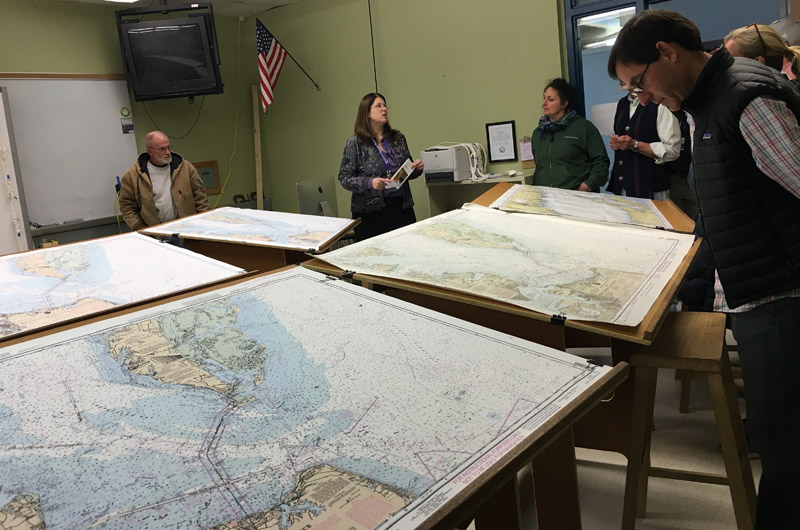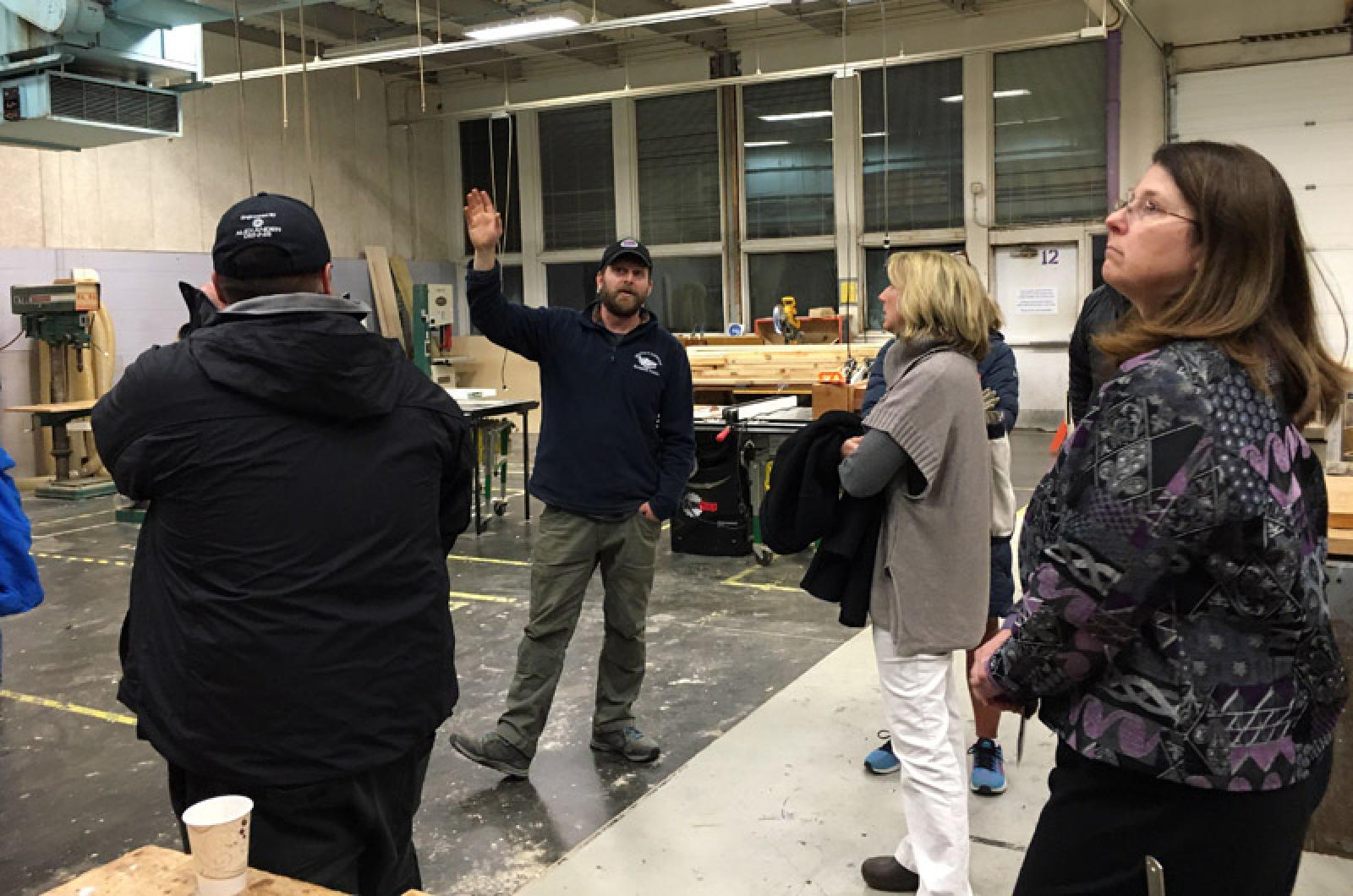At a meeting on Thursday night, community members toured the career and technical education facilities at the Martha’s Vineyard Regional High School and sampled treats prepared by the culinary arts students. In between nibbles they confronted leaky windows and ceilings, poor air ventilation and talk of rats.
“I’ve actually been sitting at my desk and seen rats and mice come in this door,” said automotive program director Ken Ward.
Bill Seabourne, the program director for building trades, pointed to leaks and unsealed doors in his area, but also said that he and his students are made of strong stuff.
“There is no heat in here, but that doesn’t bother me,” Mr. Seabourne said. “We’re carpenters.”
The building trades garage is scheduled to be replaced this summer, but Mr. Seabourne said the space would still have a few issues. The leaks render a strip in the middle of the shop unworkable and have ruined materials. The second floor classroom where students also store finished projects is only accessible by a steep flight of stairs, with no options for people with disabilities.
This was the third meeting in a series to highlight the needs of the high school building. Interim principal Margaret (Peg) Regan applauded the comprehensiveness of the school, in particular its technical and vocational education programs, but added that the facilities are limiting the potential of the program.
“We are not in a place right now where we can adequately prepare our students for the workforce,” she said. “Our ambition is great, but our facilities are poor.”
Mary Vivian, the health assisting program director, needs double the amount of space as well as a bathroom to make the space compliant with state regulations, she said. The room her class occupies is also short on storage and a sanitation sink.
“I love my room but to really get this approved by the state, we need to get this up to code,” she said. The health assisting class is in its second full year.

The needs continued to add up. Maritime sciences students cram into an inaccessible and overheated room, and the new radio class broadcasts from a room the size of a broom closet. The walk-in units in the culinary arts kitchen were recaulked five years ago but are leaking again. And in the greenhouses for the horticultural class, a crumbling foundation is filled with foam to keep the pests at bay. The plastic coverings are five to 10 years past their replacement due date and there is no bathroom. It is, however, accessible to students with disabilities.
“It’s totally inefficient, but we patched it up as much as humanely possible,” said program director John Wojtkielo. “You can build a nice structure without being too extravagant.”
Finance manager Mark Friedman said maintenance and repairs are in the high school budget but the amount is not nearly enough to cover the cost of everything that needs attention at the school. School leaders currently have to pick and choose which issues are the most pressing and need to addressed first.
“We have hundreds of thousands [of dollars],” Mr. Friedman said. “We need millions.”








Comments (15)
Comments
Comment policy »